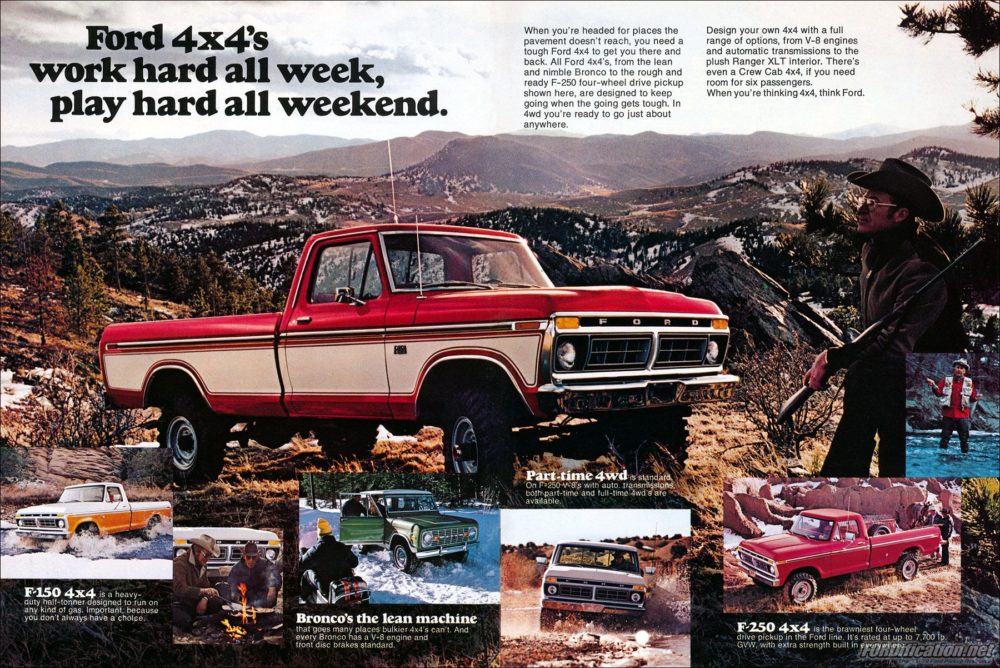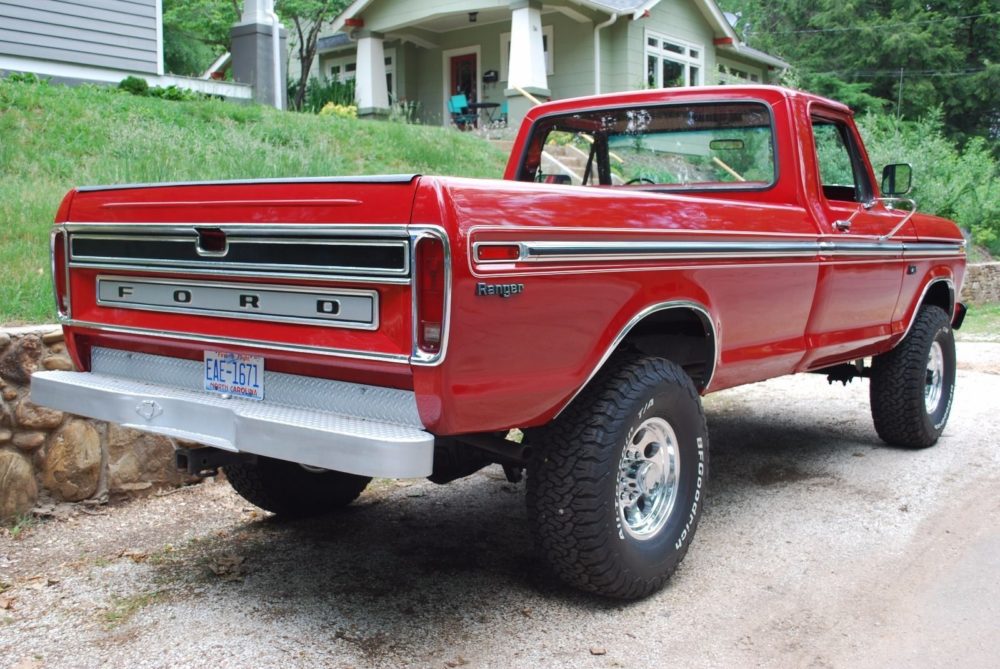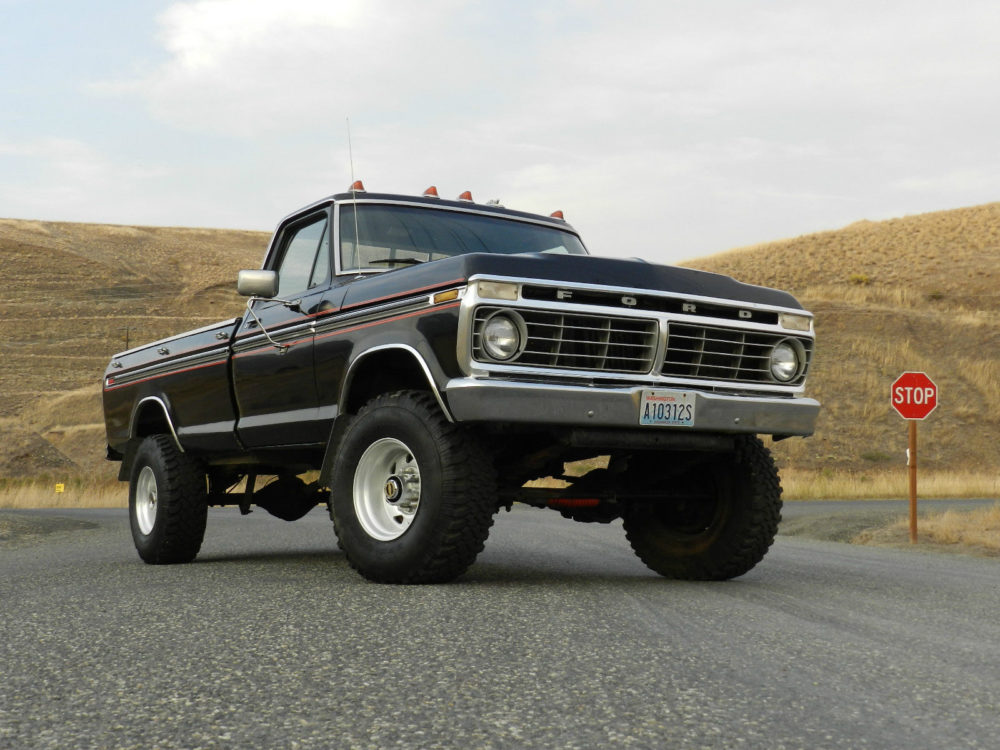Ford Highboy: The Definitive Guide

Ford’s large and in charge Highboy has become a highly sought-after truck. But what, exactly, makes a Highboy a Highboy?
Is there any term that exists in the automotive realm which conjures up more confusion than the Ford Highboy? Some people are quite familiar with them, yet to others, it’s a mystery. Many folks think they know what makes a Highboy a Highboy, but maybe they don’t know the whole story. And in many cases, the information they’ve read is simply wrong.
You can’t really blame them, of course. After all, the term Highboy is not, and never was, an official Ford moniker. Like Bullnose and Dentside, it’s a term dreamed up by some fan of the brand. For whatever reason, the term stuck, and now it’s used to describe a certain, particular, much-loved model(s). And in the interest of clearing up all this confusion, we here at Ford Truck Enthusiasts set out to clarify just what a Highboy really is.
For starters, as we’ve already mentioned, “Highboy” is not official Ford terminology. The origin of the term is unknown, but probably evolved from Ford’s 1969 print advertisement for the four-wheel drive F-250 which referred to the truck as a “Factory High Rider.” The term Highboy was originally hot rodder’s terminology for 1928-1932 Ford roadsters with their fenders and running boards removed, exposing the frame rails. But it’s also been used to describe certain types of farm tractors and even furniture.
By definition, the Ford Highboy must be a four-wheel drive F-250 produced between 1967 and 1977.5 with a divorced transfer case (either Dana 24, NP203, or NP205) which caused the front end to sit higher. To compensate for this extra height, Ford installed 4-inch lift blocks in the rear to even things out. Ford switched to married transfer cases midway through the 1977 model year, at which point people began to differentiate the two by calling trucks with the new setup “Lowboys.”
Despite the presence of a rear lift block, Highboys are not “factory lifted,” as many people incorrectly state. The front of the trucks only sit higher because of the divorced transfer case, and do not feature a lift block. The rear block, which sits between the axle and leaf springs, was something found in most trucks at that time.
Still, all Highboys sat noticeably higher off the ground than their regular counterparts, at least in the early years. The 1967-1972 Highboy sits approximately 2.58-2.77 inches higher than a comparable F-100 4×4, 5.24-5.6 inches higher than the F-250 4×2, and 6.1-6.4 inches higher than the F-100 4×2. Later Highboys didn’t sit much higher than their counterparts, as total height didn’t vary much between models.
The front leaf springs on a Highboy were 3 inches wide and came with either 5 or 6 leafs, depending on gross vehicle weight. These leaf springs are easily identified because they are noticeably more arched than non-Highboy leaf springs. Rear leaf springs were 2 1/4″ wide and consisted of 9 leafs. By comparison, non-Highboy springs measured 3 inches wide.
Highboy front axles consisted of either an 8-lug Dana 44, Dana 44HD, or Dana 60, all of which were low pinion. Rear axles were either a 16 or 30 spline 8-lug Dana 60. All Highboys used a 4.10:1 gear ratio. From 1967-1975, drum brakes were used at all four corners, while the later models were available with disc brakes in the front. Power brakes were also optional from 1973-1977.5.
All Highboys came in either crew cab or regular cab configuration. Ford didn’t build a SuperCab F-250 4×4 until 1978, most likely because the SuperCab body won’t bolt to the narrow Highboy frame. The rear cab mounts on a Highboy actually reside outside the frame rails because they are so narrow. Those frames measure in at 33.5 inches wide, same as the F-350. The Highboy frame is distinguishable from the F-350 by a front crossmember positioned just below the front bumper that is visible from the front of the truck.
Engine options are a large source of misconception when it comes to the Highboy. Many think that only two powerplants were offered, but that isn’t the case. Depending on the model year, a grand total of six different engine options were available: 240 six-cylinder (1967-1974), 300 six-cylinder (1967-1977.5), 351M V8 (1977), 352 V8 (1967), 360 V8 (1968-1976), and 400 V8 (1977). Neither the 390 nor the 460 V8s were ever offered in Highboys from the factory, though many have been swapped in over the years.
Transmission options consisted of either a Toploader 3-speed manual (1967-1971), NP-435 4×2 4-speed manual (1967-1977.5), or the optional SelectShift Cruise-O-Matic C6 (1973-1977.5). Early Highboys (1967-1972) sported a 133-inch wheelbase, while later models measure in at 150 inches.
Highboys never came equipped with a rear gas tank, as it proved too wide for the truck’s narrow rear frame rails. Instead, they all came with in-cab gas tanks and optional (additional) side-mounted tanks. The U.S. eventually outlawed in-cab gas tanks, which is why Ford ceased producing trucks employing them after 1977. This could also partly explain the end of the Highboy as we know it.
Once Ford made the switch to married transfer cases in late 1977, the Highboy immediately became the Lowboy. The 4-inch rear lift blocks were no longer needed, nor was the narrow frame. The Lowboy does carry a few advantages over the Highboy, despite a possessing a weaker frame, however. A high pinion Dana 60 became optional, as did integrated power steering and 3-inch wide rear leaf springs.
But it’s the Highboy that has captured the imagination (and interest) of Ford truck enthusiasts today. We simply love the look, not to mention the fact that we can stuff up to 38-inch tires underneath without any additional suspension work. Or maybe it’s the fact that the original Bigfoot was a Highboy. No matter what the reason, these trucks have become highly sought after today. So if you’re in the market for one, make sure you’re armed with the right information!











